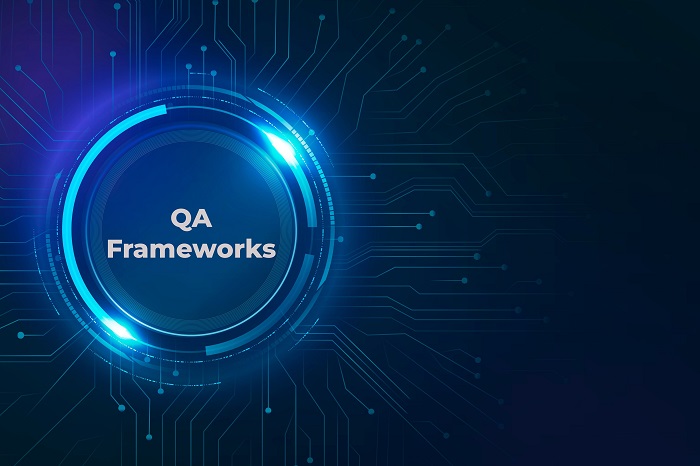Quality Assurance (QA) frameworks are critical in maintaining high standards of service in call centers. They help ensure that every interaction aligns with company objectives and delivers an optimal customer experience. This article explores primarily three types of QA frameworks used in call centers: Compliance-Based, Customer Experience-Focused, and Performance-Based. Understanding these frameworks can help call centers select the most appropriate strategy for their needs and improve their overall service quality.
QA Frameworks
Overview of Quality Assurance in Call Centers
In a call center environment, QA involves evaluating and improving the quality of customer interactions. It ensures that agents adhere to company policies, provide excellent service, and meet customer expectations. QA frameworks offer structured approaches to monitor and assess these interactions systematically.
Importance of QA Frameworks for Operational Excellence
QA frameworks play a pivotal role in enhancing operational efficiency, customer satisfaction, and agent performance. They provide guidelines and metrics for evaluating calls, identifying areas for improvement, and ensuring consistent service quality.
Type 1: Compliance-Based QA Frameworks
Key Features and Objectives
Compliance-Based QA Frameworks focus on ensuring that call center agents adhere to regulatory requirements and company policies. This type of framework emphasizes strict adherence to guidelines related to data protection, legal requirements, and internal procedures. Key features include detailed checklists, adherence scoring, and compliance audits.
Benefits and Challenges
Benefits:
- Regulatory Adherence: Helps prevent legal issues by ensuring compliance with laws and regulations.
- Consistency: Promotes uniformity in handling sensitive information and following standard procedures.
Challenges:
- Rigid Structure: Can be too rigid, potentially limiting agents’ flexibility in addressing unique customer needs.
- Focus on Compliance Over Experience: May lead to a focus on procedural adherence rather than customer satisfaction.
Examples of Compliance-Based QA Frameworks
- HIPAA Compliance Framework: Ensures that health-related information is handled securely and in accordance with legal standards.
- PCI-DSS Compliance Framework: Focuses on securing payment card information to prevent fraud and data breaches.
Type 2: Customer Experience-Focused QA Frameworks
Key Features and Objectives
Customer Experience-Focused QA Frameworks aim to enhance the overall customer experience by evaluating the quality of interactions from the customer’s perspective. This framework prioritizes factors such as empathy, problem resolution, and customer satisfaction. Key features include customer feedback surveys, sentiment analysis, and quality metrics related to interaction quality.
Benefits and Challenges
Benefits:
- Enhanced Satisfaction: Focuses on improving the customer’s experience, leading to higher satisfaction and loyalty.
- Personalized Service: Encourages agents to tailor their interactions to individual customer needs.
Challenges:
- Subjectivity: Quality assessments can be influenced by subjective judgments, leading to inconsistencies.
- Resource Intensive: Requires significant resources for collecting and analyzing customer feedback.
Examples of Customer Experience-Focused QA Frameworks
- Net Promoter Score (NPS): Measures customer loyalty and satisfaction based on their likelihood to recommend the company.
- Customer Satisfaction Surveys: Collects direct feedback from customers about their experiences with call center interactions.
Type 3: Performance-Based QA Frameworks
Key Features and Objectives
Performance-Based QA Frameworks are centered on evaluating agents’ performance through metrics such as call handling time, resolution rates, and adherence to KPIs (Key Performance Indicators). This framework focuses on measuring efficiency and effectiveness rather than procedural compliance or customer satisfaction. Key features include performance dashboards, metric tracking, and performance reviews.
Benefits and Challenges
Benefits:
- Objective Metrics: Provides clear, quantifiable data on agent performance.
- Improved Efficiency: Identifies high-performing agents and areas for improvement, leading to increased operational efficiency.
Challenges:
- Potential for Stress: High emphasis on metrics can lead to stress and burnout among agents.
- Neglecting Customer Experience: May overlook the quality of customer interactions in favor of performance metrics.
Examples of Performance-Based QA Frameworks
- Service Level Agreements (SLAs): Defines performance targets such as average response time and resolution rates.
- Agent Scorecards: Tracks individual performance against predefined KPIs and metrics.
Comparing the Three QA Frameworks
Strengths and Weaknesses of Each Framework
Compliance-Based QA Frameworks ensure regulatory adherence and procedural consistency but may be too rigid and less customer-focused. Customer Experience-Focused QA Frameworks enhance customer satisfaction and provide a personalized service but can be subjective and resource-intensive. Performance-Based QA Frameworks offer objective performance metrics and improve efficiency but may stress agents and overlook the customer experience.
How to Choose the Right Framework for Your Call Center
Selecting the right QA framework depends on your call center’s goals and priorities. Consider factors such as regulatory requirements, customer satisfaction objectives, and performance metrics. A combination of frameworks might be necessary to balance compliance, customer experience, and performance.
Implementing a QA Framework in Your Call Center
Steps to Implementation
- Define Objectives: Clearly outline what you aim to achieve with your QA framework.
- Choose a Framework: Select the framework(s) that align with your objectives and operational needs.
- Train Staff: Provide training for agents and supervisors on the new QA processes.
- Monitor and Evaluate: Regularly assess the effectiveness of the framework and make necessary adjustments.
Common Pitfalls and How to Avoid Them
- Lack of Buy-In: Ensure all stakeholders understand and support the framework to avoid resistance.
- Inadequate Training: Provide comprehensive training to ensure proper implementation and adherence.
- Neglecting Feedback: Regularly collect and act on feedback from agents and customers to refine the framework.
Conclusion
In conclusion, QA frameworks are essential for maintaining high standards in call center operations. By understanding the different types of QA frameworks—Compliance-Based, Customer Experience-Focused, and Performance-Based—you can choose the most appropriate strategy for your call center’s needs. Implementing the right framework will enhance service quality, improve customer satisfaction, and drive operational excellence. As the call center industry evolves, staying informed about QA trends and adapting your framework accordingly will help you stay ahead in delivering exceptional customer experiences.




